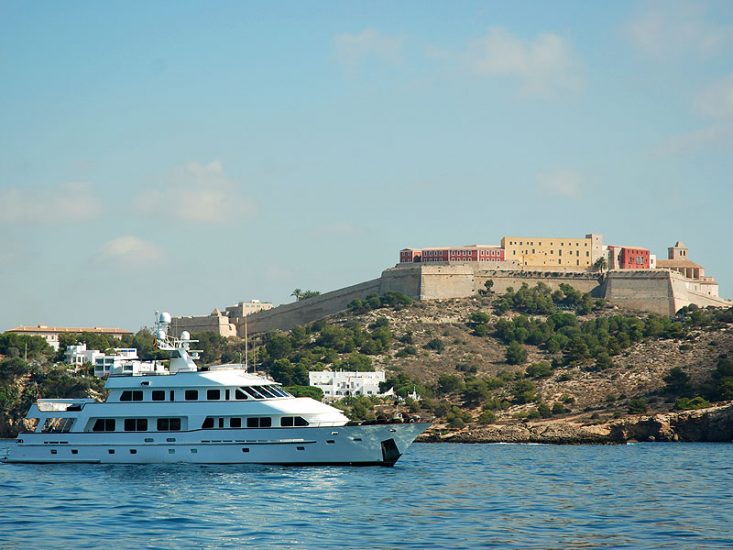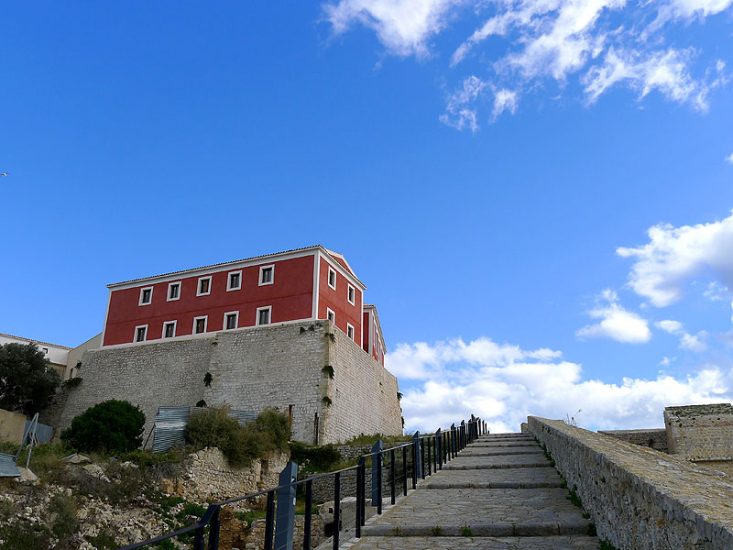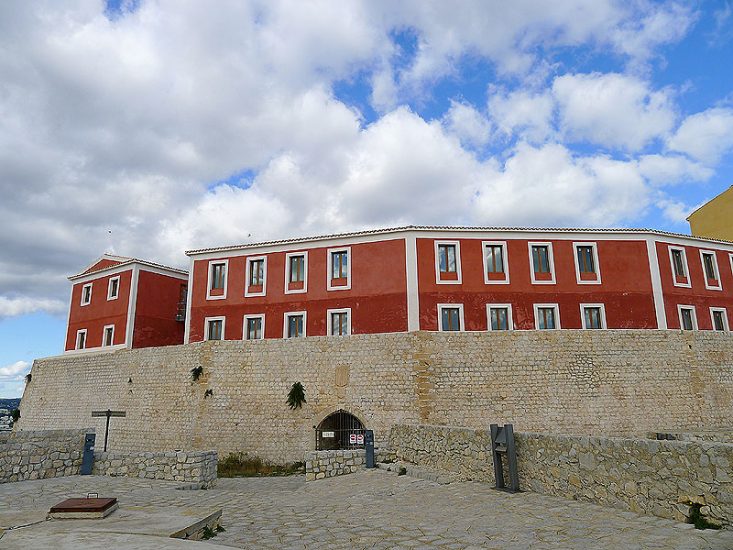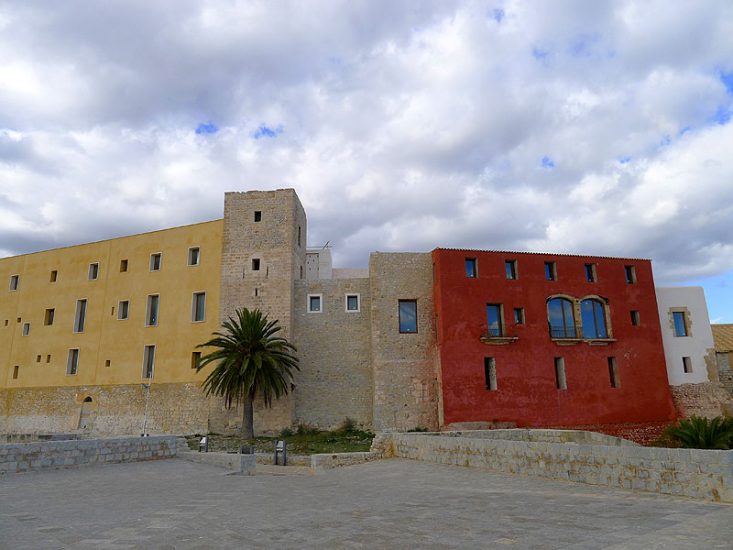The last defensive bastion from the Moorish period in Ibiza
.Eivissa Castle consists of a group of buildings on the summit of the hill Puig de Vila. Before the Renaissance city walls were built, this enclosure– together with the fortress (Almudayna)- took the form of a real citadel surrounded by a wall with 12 towers, mention of which appears as early as the 12th century in medieval documents. The two enclosures were separated by an inside wall with a tower that was demolished in the 18th century when the barracks designed by the architect Simon Poulet were built.
The quadrangular grounds of the Castle with towers in each corner are reminiscent of the structure of the Islamic “qars”, which were fortified constructions that were the last defensive redoubt of the city. The entrance to the Castle was on the east side, between towers II and III, perhaps in the same place where the current entrance stands.
The work carried out on the Governor’s House (La Casa del Governador) has allowed us to discover more about the south side of the Castle, or more specifically the section extending between towers I, VI and VII. Old structures of the Moorish fortification have been discovered inside tower VI. At the base of the tower, the ruins of another perhaps older tower or stretch of wall can be seen. The keep was built on these remains in the 14th century and is the highest and best preserved tower in the fortress. It is located where the grounds of the Castle and the Almudayna meet and from this tower there is a panoramic view of the southern coast of the island and the city’s port.
The Governor’s House on the southern side of the castle is a group of residential buildings for government representatives. Alfonso III of Aragon must have stayed here during his short stay on the island in 1286, according to the chronicler Ramón Muntaner. The set of buildings are not of great artistic value, although some gothic and Renaissance-style features have been preserved. From a heritage point of view, among the preserved interior rooms of the ground floor, the section of the Moorish fortification stands out above all else.
It remains closed after a renovation and conversion project to turn it into a Parador de Turismo.




